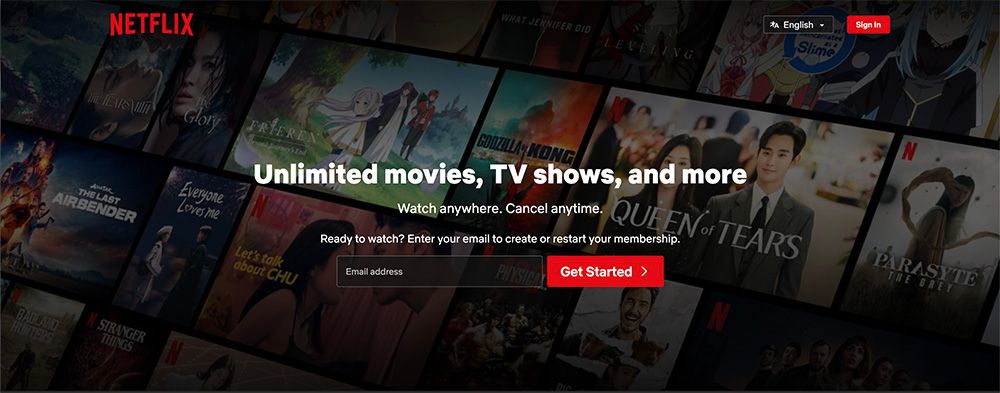OTT Broadcasting: Detailed introduction and Platform Selection
Over-the-top (OTT) broadcasting has become an increasingly popular mode of content delivery, allowing users to access their favorite movies, TV shows, and live events via the internet. As the OTT landscape continues to evolve in 2024, it's essential to understand how it works, the different types of streaming. In this article, we'll also discuss how to choose the right OTT broadcasting platform and provide a brief overview of some top OTT service providers.

What is OTT Broadcasting?
OTT broadcasting refers to the delivery of video and audio content over the internet, bypassing traditional cable or satellite television systems. This allows users to access content on-demand, providing greater flexibility and control over their viewing experience.
How Does OTT Broadcasting Work?
OTT broadcasting works by streaming content through the internet directly to users' devices, such as smartphones, tablets, or smart TVs. Content providers create and store their media on servers, which are then accessed by users via OTT platforms or applications. These platforms use adaptive bitrate streaming to ensure a smooth and high-quality viewing experience, even with varying internet speeds.
Different Types of OTT Streaming
1. Subscription Video on Demand (SVOD)
Subscription Video on Demand (SVOD) is a video content delivery model where users pay a recurring fee, typically on a monthly basis, to access a library of video content. This model is used by popular streaming services like Netflix, Amazon Prime Video, and Hulu, where subscribers can access a vast library of movies, TV shows, and other video content for a fixed monthly fee. SVOD services allow users to watch content on-demand, without the need for a traditional cable or satellite TV subscription.
2. Transactional Video on Demand (TVOD)
Transactional Video on Demand (TVOD) is a video content delivery model where users pay for individual pieces of video content, such as a movie or TV show episode, on a one-time basis. This model is commonly used by online video rental services like iTunes, Google Play, and Amazon Video, where users can rent or purchase individual movies or TV show episodes for a fee. With TVOD, users only pay for the content they want to watch, rather than subscribing to a service with a fixed monthly fee.
3. Advertising-based Video on Demand (AVOD)
Advertising-based Video on Demand (AVOD) is a video content delivery model where users can access video content for free, but with advertising included. This model is commonly used by streaming services like YouTube, where users can watch a wide range of videos for free, but with ads displayed before, during, or after the video content. AVOD services generate revenue through advertising, rather than through subscription fees or individual content purchases.
4. Live Streaming
Live streaming refers to the broadcasting of live video content over the internet to an audience in real-time. This can include live events, such as sports games, concerts, and conferences, as well as live streaming of video game play, known as "streaming" or "live streaming." With live streaming, viewers can watch events as they happen, rather than watching pre-recorded content. Live streaming can be done through various platforms, including social media platforms like Facebook and Instagram, as well as dedicated live streaming services like Twitch and YouTube Live.
What is OTT Streaming Services?
OTT Streaming Services refer to video content delivery services that use the Over-the-Top (OTT) model to distribute video content over the internet, bypassing traditional cable or satellite TV providers. These services include popular streaming platforms like Netflix, Hulu, Amazon Prime Video, Disney+, and HBO Max, among others. OTT Streaming Services offer a wide range of video content, including movies, TV shows, and original programming, which can be accessed on-demand by subscribers. OTT Streaming Services can be accessed via a variety of devices, including smartphones, tablets, smart TVs, gaming consoles, and streaming devices like Roku and Apple TV.
The following are some of the top OTT streaming services:
1. Netflix

Netflix remains a giant in the OTT streaming space, renowned for its vast library of films, TV shows, documentaries, and original content. With its user-friendly interface, high-quality streaming, and availability across various devices, Netflix continues to be a top choice for consumers worldwide.
Amazon Prime Video has made significant strides in the OTT streaming market, offering a wide variety of content, including movies, TV shows, and critically acclaimed original series. Additionally, Prime Video provides exclusive access to a host of Amazon Originals, live sports, and a vast library of popular films and television series.
3. Disney+
Disney+ has quickly risen in the ranks of OTT streaming services, thanks to its extensive library of Disney, Pixar, Marvel, Star Wars, and National Geographic content. It also offers a host of original series and films, making it a favorite among families and fans of these popular franchises.
4. Hulu
Hulu stands out with its blend of on-demand content and live TV. Users can access a vast library of TV shows, movies, and Hulu Originals, as well as over 60 live and on-demand TV channels. Hulu also offers add-on features like HBO, Showtime, and Cinemax for additional content.
5. HBO Max
HBO Max combines all of HBO's content with a host of additional movies, shows, and Max Originals. From blockbuster films and documentaries to a vast selection of exclusive content, HBO Max offers a rich and diverse catalog for viewers of all tastes.
Choose an OTT Broadcasting Platform
Choosing an OTT Broadcasting Platform can be a complex process. Here are some key factors to consider when choosing an OTT Broadcasting Platform:
1. Content: Consider the type and quality of content offered by the platform, as well as its relevance to your target audience.
2. Features: Look for features such as live streaming, video-on-demand, user engagement tools, and analytics to help you manage and grow your audience.
3. Monetization: Consider the platform's monetization options, such as subscription-based models, advertising-based models, or transactional-based models.
4. User Experience: Look for a platform that provides a seamless and intuitive user experience across different devices.
5. Technical Requirements: Consider the platform's technical requirements, such as bandwidth, storage, and encoding capabilities, to ensure that your content is delivered smoothly and efficiently.
6. Support: Look for a platform that offers reliable technical support and customer service to help you resolve any issues that may arise.
7. Cost: Consider the costs associated with using the platform, including setup fees, transaction fees, and ongoing subscription or usage fees.
5 Best OTT Service Providers
Tencent MPS is a well-known platform that offers broadcast-standard transcoding services, including 4k/8k, HDR, and 10bit UHD video enhancement, optimizing cinema playback for clarity and smoothness.Key features include:
- Covering over 2800 CDN acceleration nodes worldwide
- Live streaming capabilities
- Supports H.264, H.265, and AV1 encoding standards and ensures high video quality while reducing bandwidth costs by 50%
- Supports real-time 4K and 8K encoding and delivers a smooth UHD viewing experience
- End-to-end millisecond delay, with an average delay of less than 800 ms
2. Brightcove
Brightcove is a OTT service provider that offers a comprehensive and user-friendly platform. With its high-quality video streaming, extensive monetization options, and robust analytics tools. Key features include:
- Adaptive bitrate streaming for optimal viewing experience
- Customizable video player and templates
- Integration with popular CDNs for fast content delivery
- Live streaming capabilities
- Advanced analytics and reporting tools
3. Kaltura
Kaltura is a flexible and scalable OTT platform that provides a wide range of features, making it suitable for businesses of all sizes. With support for live streaming, video-on-demand, and a variety of monetization models, Kaltura offers a comprehensive solution for OTT services. Key features include:
- Support for multiple monetization models (SVOD, TVOD, AVOD)
- Customizable user interface and branding options
- Integration with third-party platforms and services
- Powerful content management and analytics tools
- Multi-device compatibility
4. Zype
Zype is a user-friendly OTT platform that focuses on simplifying the process of launching and managing an OTT service. With its customizable templates, monetization options, and analytics tools, Zype is an excellent choice for businesses looking for an easy-to-use solution. Key features include:
- Customizable video player and templates
- Support for multiple monetization models
- Advanced analytics and reporting capabilities
- Integration with popular CDNs for fast content delivery
- Multi-device compatibility
5. Vimeo
Vimeo OTT is a comprehensive solution for businesses looking to launch their own OTT service. With its user-friendly interface, powerful content management tools, and a variety of monetization options, Vimeo OTT provides an all-in-one platform for content creators and distributors. Key features include:
- Support for multiple monetization models (SVOD, TVOD, AVOD)
- Customizable user interface and branding options
- Powerful content management and organization tools
- Advanced analytics and reporting capabilities
- Multi-device compatibility
FAQs
1. What is the difference between OTT and IPTV?
OTT delivers content over the open internet, while IPTV uses a dedicated, managed network provided by a telecom operator.
2. Can OTT streaming services be accessed worldwide?
While most OTT streaming services are available globally, some may have regional restrictions due to licensing agreements or regulatory requirements.
